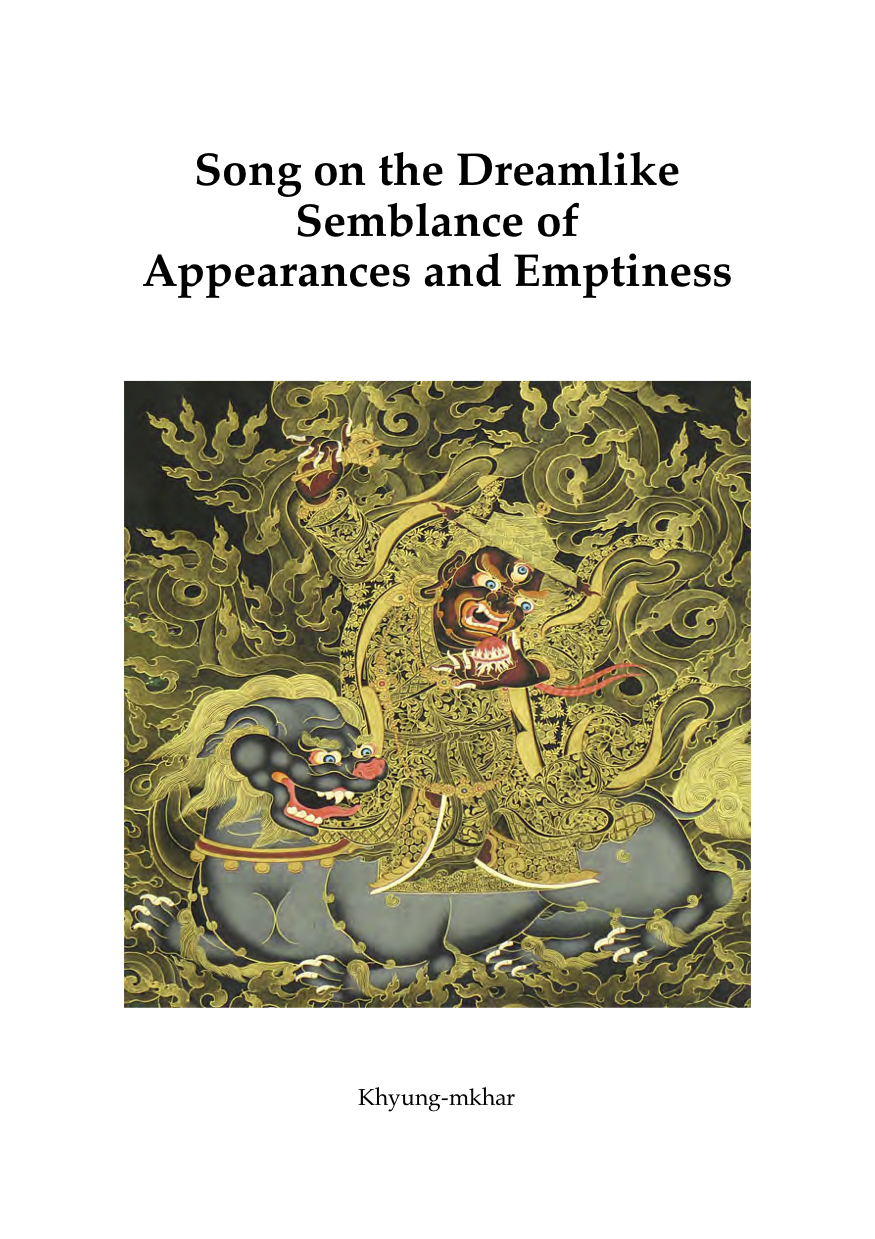 Longchenpa:
The Wheel of Clear-Light of Day and Night, translated from the Tibetan
and commented by Jean-Luc Achard. Translated from the French by Marianne
Ginalski, Editions Khyung-Lung, 2025, 71 pages, PDF edition only.
Longchenpa:
The Wheel of Clear-Light of Day and Night, translated from the Tibetan
and commented by Jean-Luc Achard. Translated from the French by Marianne
Ginalski, Editions Khyung-Lung, 2025, 71 pages, PDF edition only.This volume contains the translation and commentaries on Longchenpa's secret instructions about Dark Retreats (mun mtshams) as he has compiled them in his famed Quintessence of the Master or Lama Yangtik. The translation is followed by a series of three commentaries that include the oral instructions generally associated with the transmission of these teachings.
Table of Contents
Introduction 9
1. The Life of Longchen Rabjam 9
2. The Presentation of the Principles 11
3. The Role of Dark Retreats in the Practice of the Path 14
4. Further Clarifications 14
Translation — The Wheel of Clear-Light of Day
and Night 17
1. The Yoga of the Night 17
1-1. The Pressure of the Ocean 17
1-2. The Entry into the Radiance of the Ocean 18
2. The Utterly Secret Clear-Light of Daytime Yoga 19
Meaning Commentary on The Wheel of Clear-Light
of Day and Night 23
1. The Yoga of the Night 23
1-1. The Pressure of the Ocean 24
1-2. The Entry into the Radiance of the Ocean 25
2. The Utterly Secret Clear-Light of Daytime Yoga 27
The Oral Transmission of the Secret Instructions
on Dark Retreats 31
1. The Presentation of the practice of the Lamps 31
1-1. The Preliminaries 31
1-2. The Pressure of the Lamps 32
1-2-1. The Pressure of the Ocean 32
1-2-2. The Entry into the Radiance of the Ocean 33
1-2-3. The Arising Mode of the Visions 34
2. The Horizon of Day and Night 36
2-1. The Practice of the Day 36
2-2. The Practice of the Dusk 40
2-3. The Practice of the Night 41
2-4. The Practice of the Dawn 41
2-5. The Practice of Advanced Yogis 41
The Single Transmission on the Practice of
Day and Night 45
1. The Practice of the Day 45
1-1. Instructions on the View 45
1-2. Instructions on Meditation 46
1-3. Instructions on the Fruit 48
2. The Practice of the Night 49
2-1. The Practice of the Dusk 49
2-2. The Practice of the Middle of the Night 50
2-3. The Practice of the Dawn 51
3. The Fruit of Buddhahood 51
4. The Twelve Key Points of the Practice 52
Glossary 54
Bibliography 71
Publication hors-commerce à commander directement auprès de l'auteur ou bien en se connectant sur le Forum Dzogchen à l'adresse suivante:
https://forumdzogchen.forumactif.com/t999-the-wheel-of-clear-light-of-day-and-night





